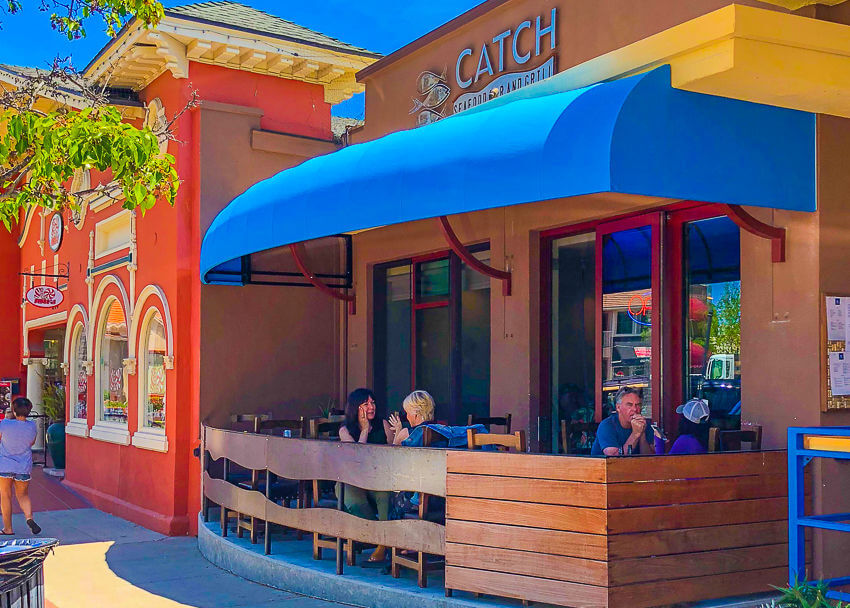Seasonal maintenance tips to keep your awnings out of trouble all year
High-quality awnings last up to 15 years or longer, especially with proper care. The high-quality materials and manufacturing from Shoreline Awnings & Patio give you a head start on years of service. Designed and manufactured in our Paso Robles showroom, our awnings are custom-made from UV-protected and weatherproofed fabrics. Mounted on welded steel frames with rust-resistant powder-coated finishes, our awnings exceed industry standards and provide years of usefulness.
Seasonal maintenance helps keep your awnings in peak condition. Storms, strong winds, heavy rain, and dust still have an effect on anything that is outside and exposed to the elements. UV-protection and weatherproofing are added protection, but Mother Nature tests the durability of everything in her path, making it a wise practice to inspect and maintain your awnings on a seasonal schedule.
Along with following the manufacturer’s care and maintenance instructions, seasonal maintenance helps identify potential issues due to seasonal conditions, such as winter storms or long, hot summer days. Dust, ash, soot, pollens, and bird droppings are regular issues that also need to be regularly addressed.
Seasonal maintenance is also the opportunity to prepare your awnings for use in the coming seasons. When in doubt, refer to the maintenance guidelines from Shoreline’s Paso Robles awning care instructions.
Here are seasonal maintenance tips to help keep your awnings in top shape.
Saving your awnings from spring fever
After the occasional early spring rain, the days warm up, and it’s a good time for inspecting your awnings for any issues that may have developed over the rainy and stormy winter months.
- Inspect for mold or mildew, which may appear as dark spots. If found, use a fabric-safe mildew remover to kill the mold. Also, wipe down the frame with a mild mold remover to get rid of any spores.
Mold tends to stain, so don’t attempt to bleach any stains on the fabric. Call Shoreline for information about removing mold stains.
- Inspect the frame for any damage. Make sure that the retractable frames are moving smoothly. Tighten any loose connections.
- Inspect for winter storm damage, especially if there have been heavy winds. Wind can blow tree branches and debris into an awning. If the wind is strong enough and the branches are heavy enough, the frame may also be damaged. If you find any damage, contact us according to the instructions in your warranty.
- When everything has been inspected, clean the awning fabric as recommended in the care and maintenance instructions. Avoid harsh chemical cleaners. Leave retractable awnings open until the fabric is dry.
Your summer chore list
Summer might seem like a time to relax vigilance a little, but there are still a few things that need attention over the hot days.
- Trim nearby trees, vines, and tall shrubs that are close to the awning. Summer is a good time for pruning because the spring growth has slowed down, and you won’t have to prune as often. However, don’t hesitate to prune any time you notice growth getting too close for comfort!
- A regular rinse helps keep dust, pollen, bird droppings, and any ash or soot from nearby wildfires under control.
- Depending on your location, inspect periodically for signs of mold or mildew. Our region’s microclimates mean that damp morning or nighttime fog is ever present. Also, coastal regions have more humidity in the air. Humidity combined with summer heat is mold’s favorite growing environment!
Fall, a little like summer, only more
Fall on California’s Central Coast is pretty much like summer, except the inland temperatures start cooling down, trees and shrubs start to drop their leaves, which means there’s more debris for the wind to blow onto your awnings, and birds begin to migrate, leaving more evidence of their presence along the way!
- Continue keeping the awnings clean and free of falling leaves and debris. Remember that fire season is still in effect, and ash and soot can be carried by wind and breezes for miles.
- Start keeping an eye on the weather reports. Rain can begin in late October. Be sure to close retractable awnings when rain or high wind is predicted.
- As inland temperatures cool, there’s more fog along the coast, adding to the humidity. Keep an eye out for signs of mold.
- Clean the gutters on the roof of the building to prevent overflow onto the awnings.
Winter, when we hope for rain even if we have to work harder
Our Central Coast winters are much like fall weather, except when Mother Nature decides it’s time for a storm. Days of pounding rain and high winds create all kinds of havoc, and your awnings might not be spared.
- Close and secure retractable awnings to help prevent wind damage.
- When there is a break in the wind and rain, inspect both retractable and fixed-frame awnings for storm damage and make necessary repairs as soon as possible.
- When there has been an overnight freeze, inspect the awnings for damage. Ice can stress fabric, metal, and moving parts.
- If it’s one of those rare winters when it snows, remove the snow from the awnings as soon as possible. The weight of snow can cause damage, even breakage.
Our warranty
Our products come with a lifetime transferable warranty. We stand behind everything we manufacture at our Paso Robles showroom. Awnings, patio covers, and enclosures are covered.
We have an excellent design and manufacturing team, including top ironworkers who can create original designs to your specifications.
Serving California’s Central Coast from Monterey to Ventura since 1982, Shoreline Awnings & Patio is the leading choice for commercial and residential awnings, patio covers and enclosures, and more.
Call us today for your custom-designed awnings!



